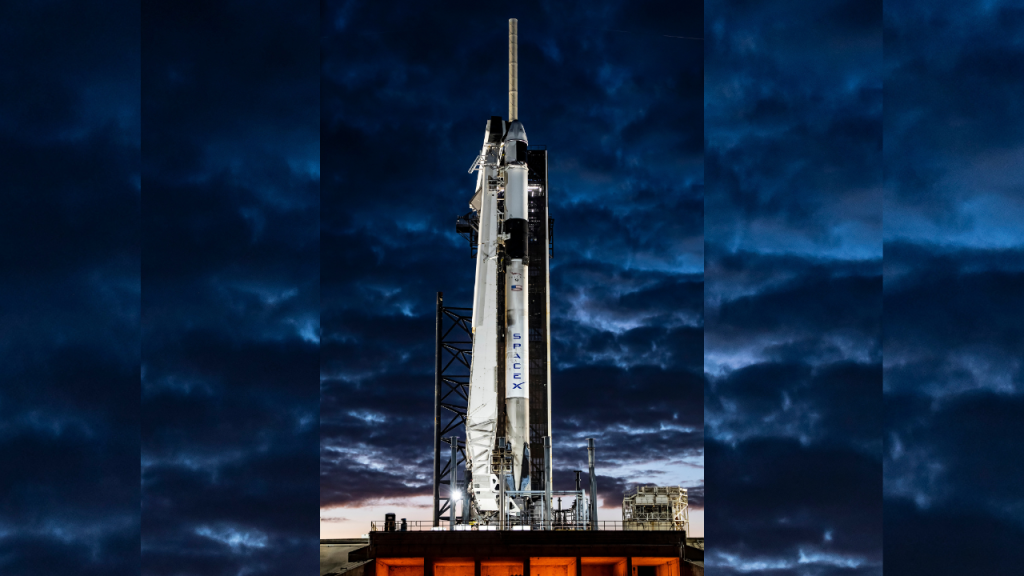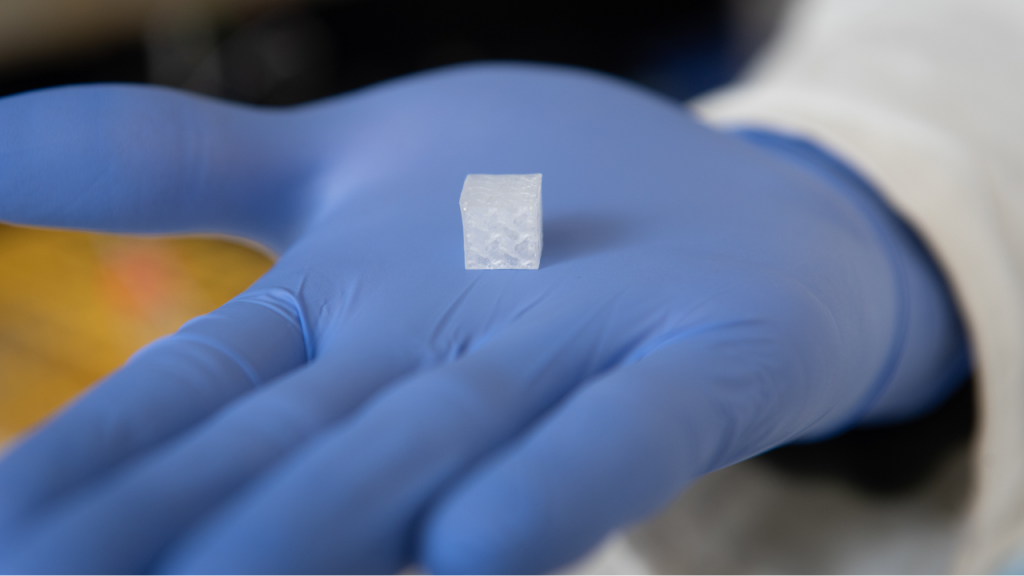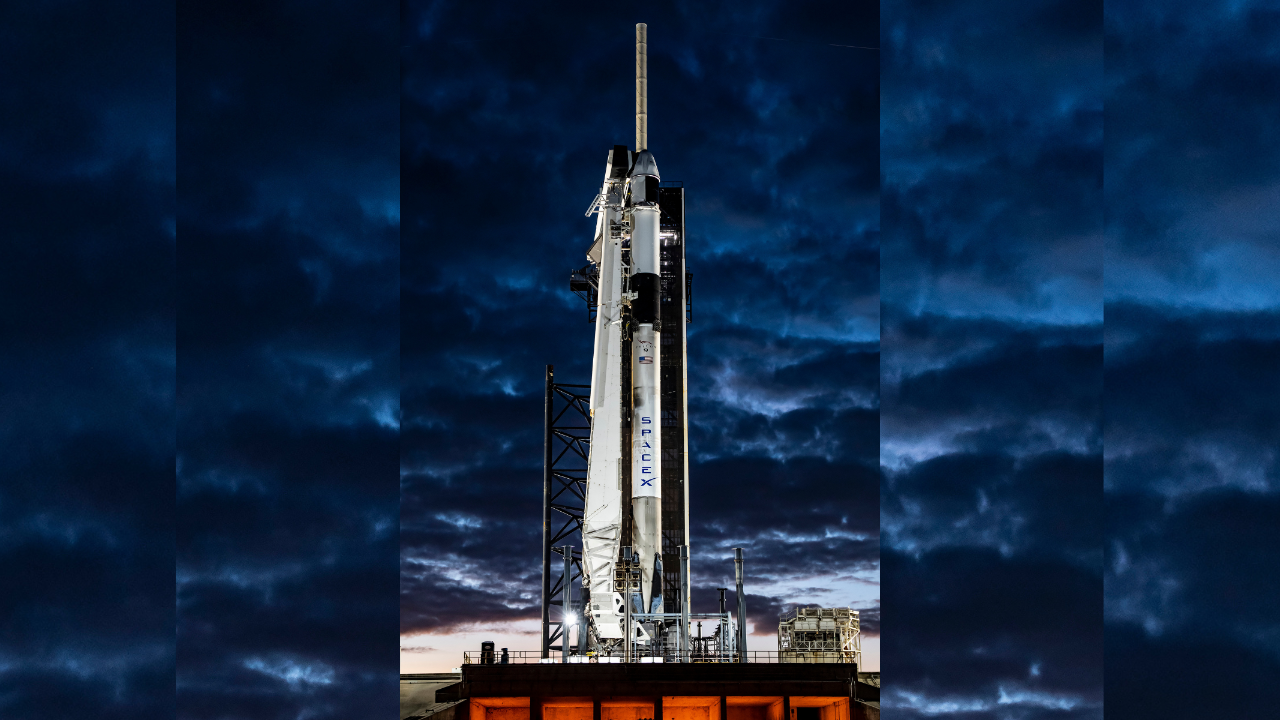Researchers from Wake Forest Institute for Regenerative Medicine (WFIRM) will soon launch 3D printed liver tissue to the International Space Station (ISS) aboard SpaceX’s Falcon 9 rocket.
The project, sponsored by the ISS National Laboratory, will investigate how microgravity environments impact the behavior of functional artificial organ constructs. This could provide new insights into how scientists can manufacture longer-lasting cellular structures for researching diseases and treating patients on Earth.
Two research teams from the institute, Team Winston and Team WFIRM, utilized 3D bioprinting technology to create live organ tissue samples, complete with complex vascular channels, as part of NASA’s Vascular Tissue Challenge. This competition seeks to accelerate tissue engineering and advance regenerative medicine technologies.
They received $400,000 in funding as a result of their earlier earth-bound demonstrations, where their 3D printed tissues functioned in laboratories for up to 30 days. In space, however, zero gravity alters cell distribution, behaviour, and adhesion in vascularised constructs. These changes could hold the key to improving the viability of artificial organs.
Team Winston will be the first of the two to dispatch its samples to the ISS. Once in orbit, the 3D printed tissues will be assessed using Redwire Space’s Multi-Use Variable-Gravity Platform (MVP).
The project is slated to launch aboard SpaceX’s 33rd Commercial Resupply Services mission, scheduled to lift off from Cape Canaveral Space Force Station no earlier than August 24th, 2025, at 2:45 a.m. Eastern time. The NASA-contracted flight will ferry more than 20 experimental payloads, sponsored by the ISS National Lab, on SpaceX’s Falcon 9 rocket.
“This collaborative investigation has the potential to yield remarkable results,” explained James Yoo, the WFIRM professor leading the work. “By leveraging bioprinting technologies, we’ve created gel-like frameworks with channels for oxygen and nutrient flow that mimic natural blood vessels, opening up new possibilities for medical treatments both on Earth and in space.”

Testing 3D Printed organ tissue in space
During 3D bioprinting, scientists load living human cells into bioinks and extrude them to create functional replicas of organ tissues. These can be used to study illnesses, test medications, and repair tissues damaged by injury, ageing, or pathological conditions.
WFIRM’s two research teams at WFIRM used this method to fabricate liver tissue with vascular channels. On Earth, producing thick bioprinted tissue remains difficult because stable vascularisation is hard to achieve. Current 3D printed tissues struggle to take in oxygen and nutrients while removing metabolic waste. As a result, engineered tissue degrades quickly, with WFIRM’s 3D printed liver lasting only 30 days.
Microgravity may offer a solution to these hurdles. Without Earth’s gravitational force, cells change how they distribute, behave, and adhere. Understanding these shifts, researchers argue, could yield insights into making longer-lasting functional tissue.
WFIRM’s ISS experiments will study how microgravity influences cell behaviour, with the goal of improving tissue growth and maturation. The team will test whether vascular cells can properly line the blood vessels in a liver construct. Yoo believes the results could advance tissue engineering on Earth and, in time, make space-printed constructs viable for transplants.
NASA’s Vascular Tissue Challenge is part of the agency’s Centennial Challenges program under the Space Technology Mission Directorate. The Methuselah Foundation’s New Organ Alliance organized the competition and convened a panel of nine judges specializing in regenerative medicine. The effort is supported by experts from NASA, the National Institutes of Health, the ISS National Lab, and leading universities.
“Our mission at the Methuselah Foundation involves advancing human longevity through regenerative medicine,” explained the Methuselah Foundation’s co-founder and CEO, David Gobel. “By collaborating with NASA and the ISS National Lab to accelerate innovation, we’re not only improving human health on Earth but also preparing for the challenges of space exploration and bolstering the future space industry.”


Additive manufacturing on the ISS
The ISS is a key hub for on-orbit 3D printing research. Over recent years, additive manufacturing companies, academic researchers, and commercial enterprises have sent 3D printing technologies for testing in microgravity conditions.
A recent review by researchers from Xi’an Jiaotong University and the China Academy of Space Technology offers a comprehensive account of in-space 3D printing using polymers and fiber-reinforced composites. The document, published on ScienceDirect, identified additive manufacturing as a transformative approach to fabricating space structures.
3D printing components on-orbit addresses challenges associated with payload mass, onboard spares, and launch geometry. Launching earth-made items into space can cost over $10,000 per kilogram.
The review identified FFF as the most viable microgravity technique due to its use of solid filament feedstock and absence of free-flowing liquids or powders. NASA first tested microgravity extrusion with ABS during a parabolic flight in 1999. Further campaigns by Made In Space Inc. (MIS) placed the first 3D printer aboard the ISS in 2014.
More recently, Finnish bioprinting firm Brinter AM Technologies announced plans in 2024 to launch its Brinter Core 3D bioprinter to the ISS in a European Space Agency-funded mission. Once aboard, the Brinter Core will be used to 3D print biosamples in the ISS Columbus module’s 3D BioSystem facility.
ISS personnel will use the system to study how microgravity affects 3D printed cell constructs. The work aims to improve responses to medical emergencies in space and to advance personalized drug testing, toxicology studies, and the bioprinting of body parts. Tomi Kalpio, CEO of Brinter, noted that, in the future, astronauts could use bioprinters to “create tissue-like constructs to replace damaged parts of their bodies” when treating skin burns or bone damage.
Registrations are now open for Additive Manufacturing Advantage: Energy on September 17th. Reserve your free ticket now.
Want to help select the winners of the 2025 3D Printing Industry Awards? Register to join the Expert Committee today.
Subscribe to the 3D Printing Industry newsletter to keep up with the latest 3D printing news.
You can also follow us on LinkedIn, and subscribe to the 3D Printing Industry Youtube channel to access more exclusive content.
Featured image shows SpaceX’s Falcon 9 Rocket, which will carry ISS National Lab-sponsored research to the International Space Station. Photo via NASA.
